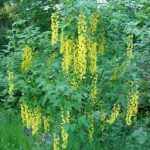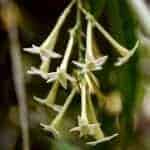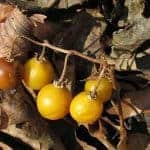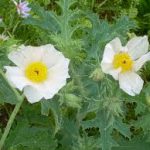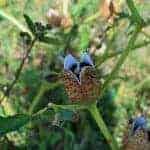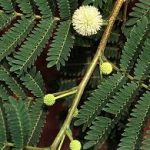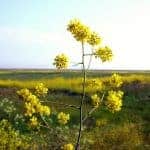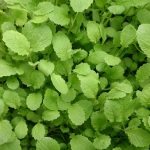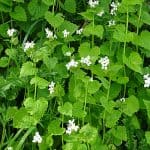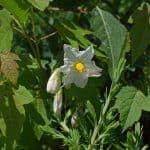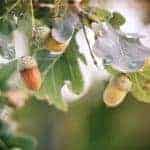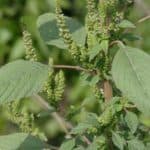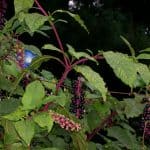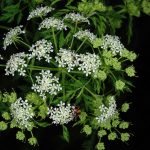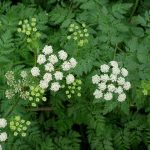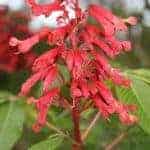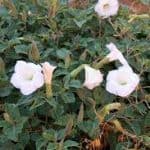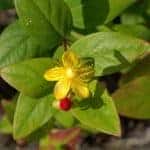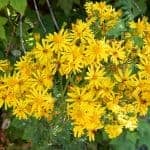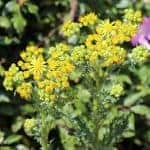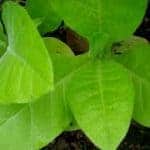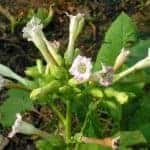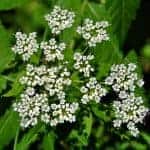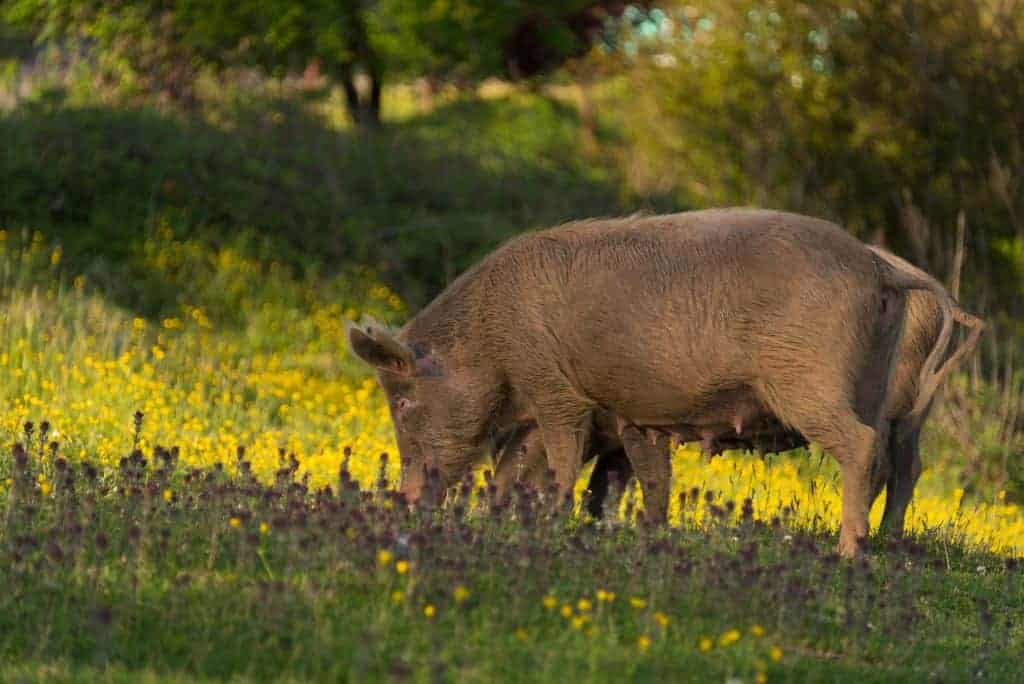
This resource has been fully reviewed and updatedA member of The Open Sanctuary Project’s staff has given this resource a full review and provided updates where necessary. by a member of The Open Sanctuary Project’s staff as of October 28th, 2021
It can be a challenge to ensure pig residents have healthy, happy lives after coming to a sanctuary, and there are many different aspects of care to consider each day. Unfortunately, toxic and poisonous hazards are sometimes overlooked in the hustle and bustle of operating a sanctuary. While minor exposure to many of these toxins is unlikely to cause serious problems, large amounts can cause severe health issues and sadly, even death. Some toxins are highly dangerous even in small amounts.
To help ensure you never run into this problem, we have compiled this resource of common plants and other potentially toxic things that have been known to be a problem for pigs.
Ask About Activated Charcoal
While prevention is imperative when it comes to protecting your residents from toxins if they accidentally ingest something toxic, the administration of an activated charcoal product may help absorb the toxins. This is not a magic cure and may not be appropriate in all situations, but it can be helpful to have on hand. We suggest asking your veterinarian if there are specific products they recommend for the various species in your care so you can have them ready should you need them. In addition to seeking urgent medical care, if a resident ingests a toxin, ask your veterinarian if administration of activated charcoal is advised.
Toxic Plants
This is not an exhaustive list. There may be particular plants that grow in your region that are not included on the list. Check with your region’s agricultural department to ensure you have a full picture of what could be problematic for pigs in your area!
In addition to individual species resources on toxic plants, we now have The Open Sanctuary Project’s Global Toxic Plant Database where you can search for toxicity based on species and other factors!
Plants That Are Toxic To Pigs
- vomiting
- abdominal pain
- diarrhea
- cardiac arrhythmias
- Horses and pigs are most affected by the thiaminase present in bracken.
- severe depression
- blindness
- weakness
- death
- chronic inflammation
- salivation
- blisters/ulcers of mouth and digestive system
- colic or gastric issues
- diarrhea (sometimes bloody)
- vomiting
- diarrhea
- increased thirst
- convulsions
- prostration
- circulatory collapse
- Wilted cherry tree leaves cause anxiety.
- staggering
- falling down
- convulsions
- rolling of the eyes
- tongue hanging out
- loss of sensation
- dilated pupils
- The pig can then become quiet, bloat and die within a few hours of ingestion.
- vomiting
- diarrhea
- gaseous distension of the stomach
- muscle tremors
- ataxia
- excitement followed by collapse and paralysis
- seizures may occur
- labored breathing
- irregular respiratory rate
- vomiting
- abdominal pain
- The spiny burs are also a mechanical source of injury to animals, causing oral injury when consumed.
- severe depression
- ataxia
- recumbency
- convulsions
- acute hepatitis
- severe hypoglycemia
- decreased appetite
- musculoskeletal incoordination
- staggering gait initially in the hind quarters.
- Potential for heart irregularity if the seeds are consumed in quantity.
- rapid respiratory rate
- difficulty in breathing if methemoglobin levels are high.
- excessive, foamy salivation
- vomiting
- frequent urination/defecation
- diarrhea
- convulsions
- muscle weakness
- staggering
- rapid/weak pulse and respiration
- Death can occur within days after ingestion of 0.5-2% of body weight.
- The toxin may take weeks, months or years to cause effect as it is toxin of
accumulation.
- liver dysfunction/non-function
- neurologic symptoms
- incoordination
- tremors
- jaundice
- recumbency
- eventually death
- stiffness
- unsteady gait
- violent tremors
- recumbency
- death
- chronic weight loss
- stiffness
- reluctance to move
- lameness
- recumbency
- elevated blood calcium levels
- Death results from progressive calcification of the soft tissues of the body.
Animals consuming the non-calcinogenic Cestrum species (all Cestrum species except Cestrum diurnum) develop signs of:
- liver failure
- weight loss
- depression
- jaundice
- hepatic encephalopathy
- salivation
- colic
- intestinal stasis
- diarrhea
- muscle tremors
- weakness
- rapid heart rate
- weak pulse
- Hemolysis and anemia may be present in severe cases.
- labored breathing
- nasal discharge
- depression
- drowsiness
- incoordination
- paralysis of rear legs
- coma
- death
- dilation of the pupils
- impaired vision
- fast, weak pulse
- nausea
- loss of muscular coordination
- violent, confrontational behaviors
- trembling
- milk is tainted
- decreased feed consumption, excessive salivation
- musculoskeletal degeneration
- poor weight gain
- congenital defects
- enlarged thyroid glands (Goitre) in the fetus and mother
- hair loss
- diarrhea
- abdominal pain
- vomiting
- salivation
- mouth ulcers
- photosensitization
- blindness
- goiter
- nitrate toxicosis
- head shaking
- aimless wandering
- abdominal pain
- dilation of pupils
- loss of appetite
- diarrhea
- loss of muscular coordination
- unconsciousness
- death
- Acorns and young shoots can cause severe poisoning.
- anorexia
- constipation that develops into diarrhea
- gastroenteritis
- thirst
- excessive urination
- edemaEdema is the abnormal accumulation of fluid in tissues of the body.
- nasal discharge
- increased heart rate and respiration
- bloat
- kidney damage/failure
- diarrhea, sometimes bloody
- lack of appetite
- weight loss
- depression
- weakness
- muscle tremors
- incoordination, staggering, or difficulty walking
- lethargy
- facial twitches
- Symptoms occur two or more hours after plants are eaten.
- retching spasms
- vomiting
- purging
- convulsions
- Death may occur within 15 minutes.
- frothing at the mouth
- uneasiness
- pain
- dilated pupils
- clamping of jaws
- grating of teeth
- vomiting
- weak, rapid pulse
- diarrhea
- bloating
- convulsions
- respiratory failure
- vomiting
- abdominal pain
- hyperglycemia
- proteinurea
- muscle twitching
- weakness
- anorexia
- coughing
- choking
- retching
- foaming at the mouth
- vomiting
- colic
- paralysis
- depression
- groaning
- muscle twitching
- death
- excessive thirst
- dry muzzle
- decreased gastrointestinal activity
- congenital defects
- increased heart rate
- disturbed vision due to pupil dilation
- photosensitizationPhotosensitization is the accumulation of photosensitive compounds beneath the skin.
- photodermatitis
- skin blisters
- lesions on udders can cause pain and refusal to nurse
- skin may peel or slough
- sometimes in sheets
- redness and swelling of eyes
- avoidance of sunlight
- higher pulse rate and temperature
- seeking out of water
- head-rubbing
- anxiety
- occasionally convulsions
- death
- There may be a delay of up to three weeks after ingestion before symptoms appear.
- nervousness
- chills
- pale mucous membranes
- loss of coat luster
- strong, rapid pulse
- high temperature
- staggering gait
- weakness
- death
- shaking
- twitching
- staggering
- paralysis
- convulsions
- heavy breathing
- excessive salivation
- diarrhea
- birth defects
- death
- Death may occur within 15 minutes.
- frothing at the mouth
- uneasiness
- pain
- dilated pupils
- clamping of jaws
- grating of teeth
- vomiting
- weak, rapid pulse
- diarrhea
- bloating
- convulsions
- respiratory failure
Other Potential Pig Toxins
Algae
Blue-green algae are usually often found in stagnant, slow-moving water when temperatures are high. Consumption of this algae can result in poisoning in pigs and other animals. Symptoms often occur quickly after ingestion. Symptoms may include lethargy, lack of appetite, vomiting, hypersalivation, nasal discharge, muscle tremors, coughing, frothing at the mouth, sneezing, involuntary eye movement, labored breathing, and bloody diarrhea. In severe cases, pigs may collapse and die. Photosensitization may be a delayed result of ingestion, causing reddening and irritation of the area around the mouth, the ear, or other areas of the body.
Hardware Disease
Hardware Disease refers to the injuries that can result from any animal resident eating something they shouldn’t, especially pieces of human-made hardware like nails, screws, and staples. Hardware disease can have devastating effects on any resident. Check out our resource on Hardware Disease prevention here.
Lead Toxicity
While pigs are more resistant to lead poisoning than many other species, it is still possible they can suffer from it. While lead was once used in paint (and even pesticides), it can also be found in the environments where old machinery or railroad ties, or leaded gas was once stored. Pigs could ingest paint by chewing or licking surfaces that contained lead or even by ingesting certain plants that have absorbed led from the polluted soil.
To be safe, you can have the soil tested. Local agricultural extension offices or environmental conservation services are good places to contact to learn more about testing your soil. The process should be fairly easy. In the meantime, be sure to prevent residents from accessing areas where you suspect they may come into contact with lead.
Pigs with low levels of lead toxicity do not generally exhibit signs. In severe cases, you may see the following symptoms:
- lack of appetite
- bloody, tar like diarrhea
- salivation
- vocalizations
- convulstions
- chomping jaws
- death in extreme cases.
Consult a veterinarian immediately if you suspect a pig has ingested lead or is beginning to show symptoms of lead poisoning.
Mycotoxins
Mycotoxins are a toxin produced by molds (fungi) that are harmful to many animals. Mycotoxins can affect pigs through contaminated food or bedding. Moist, warm environments make a perfect recipe for mold reproduction. The type and amount of mycotoxin a pig digest affects whether the health issues are immediate and short-lived or may become chronic issues. Some general signs of poisoning include:
- vomiting
- Lesions may develop on the intestines
- Kidney issues
- Liver issues
- Necrotic tissues in their tails and hooves
- Suppressed immune system
- Reproductive issues.
Different mycotoxins can produce different poisoning symptoms, both acute and chronic. Sadly, poisoning can end in death if severe enough.
Prevention is key in avoiding serious health issues. Luckily, there are several steps you can take to help ensure resident pigs do not suffer the ill effects of mycotoxin poisoning:
- Be sure to keep food, grain, and hay storage areas clean, dry, and cool.
- Try to keep food storage areas protected from mice and rats and other wildlife, as they can chew holes in food bags, increasing the likelihood of grain being exposed to damp conditions.
- Always feed the oldest sources of food first. Try to use up open food bags within a few weeks after opening in the winter and in even less time in the summer.
- Clean any storage bins or cans thoroughly to remove old grain that may get stuck in cracks and crevices.
- Check with your food manufacturer or supplier to see if they regularly test for the presence of mycotoxins in grains before mixing food. If they do not, avoid using them and find another supplier.
If you are concerned about the possibility of mycotoxin contamination, have your food stores tested. This could be especially important if you have a pig that shows initial signs of mycotoxin exposure.
Pesticides, Herbicides, And Rodenticides
It may not come as a surprise that herbicides and rodenticides can cause toxicosis in pigs if ingested. If pigs ingest plants that have been sprayed with phenoxy acid herbicides, they can become ill or even die. For this reason, pigs must be not given treated plants or are allowed access to pastures that have been treated with herbicides.
While rats and mice can pose challenges for sanctuaries, it is important to respect them and use compassionate mitigation practices. Many rodenticides are anticoagulants and act by preventing the blood to clot. These products may be appealing to pigs as well, and they may attempt to lick or eat them if discovered. For this reason, they mustn’t come into contact with these poisons. There are many new and innovative ways to address rodent populations that are more effective and compassionate.
Pesticides may affect the nervous system in pigs and can be fatal if not treated with the antidote. Early treatment is critical. If you suspect pigs may have ingested any of the poisons above, contact your veterinarian immediately. Blood tests may confirm poisoning.
Salt Poisoning
Salt poisoning can occur in pigs either as a consequence of water deprivation or from sudden ingestion of too much salt. Following sudden heavy rains, salt poisoning can occur in swine after ingestion of salty brine from overflowing, loose-salt boxes provided for other animals.
- Increased thIrst
- Constipation
- Circling
- Bumping into things
- Head pressing
- Blindness
- Seizures
- Muslce spasms
- Pigs sometimes “dog-sit”
- Raising nose upward and backward
- Falling on side in spasms
- Paddling of the legs
- Gastroenteritis
Signs often are precipitated, or worsened, by allowing the pigs sudden, unlimited access to water. Be sure to check residents have access to fresh water at all times.
Selenium
Selenium can be highly toxic when more than is required is consumed. Young pigs seem to be especially susceptible. Toxicity can occur if ingredients in premixed food have been incorrectly added or if too much selenium is supplemented in their diet. Selenium in the soil can also be absorbed into plants and consumed this way. The symptoms of selenium poisoning are:
- Lameness
- Loss of hair
- Hoof deformities
- Stiff joints
- Dullness
- Diarrhea
- Heart faulure
- Liver damage
- Kidney damage
- Paralysis
- Death
Snakebites
Venomous snakebites are not common, but when they occur, should be treated seriously and immediately. A snake can bite several times, so if you notice a snakebite, look for others. Snake venom varies by species, and the severity of a bite can also be influenced by the size, age, and the number of bites. Most venoms can impair blood clotting and damage the heart, while some others contain neurotoxins. Signs of snakebite may include:
- Swelling at site
- Pain
- Bleeding
- Salivation
- Rapid heart rate
- Lameness
- Depression
- NecrosisNecrosis is the death of most or all of the cells in an organ or tissue due to disease, injury, or failure of the blood supply. of surrounding tissue
- Black spots on skin
- Staggering
- Death
Seek veterinary care immediately if a pig is bitten by a venomous snake. Do NOT try to suck the venom out or place a tourniquet. Keep the pig calm while seeking immediate veterinary care. Depending on the severity of the bit, treatments may include antivenin, pain medications, fluid therapy, wound treatment, tetanus vaccination, and antibiotics. Check out our Compassionate Wildlife Practices At Your Animal Sanctuary for some tips on how to dissuade snakes from your property.
Wood Stains And Paints
Some wood stains and paints can be toxic to pigs. Pigs may try to chew on painted surfaces and can become ill if the stain or paint is toxic. Try and purchase paints and stains that are specially made for barns and fencing and listed as animal or “livestock” friendly.
Potentially Toxic And Questionable Foods
Consider These Variables
You may see food on this list that you have fed to your residents without any apparent issue. That may be because some foods are toxic in higher amounts while others are toxic in small amounts or whether they are being consistently offered the food over some time. It can also depend on the individual. We all have sensitivities to different things. Just as there are dogs who have eaten chocolate and don’t show clinical or subclinical signs of poisoning, there are many dogs that weren’t so lucky. The amount that may cause one resident to become ill (or even die) may be different for another resident. Different breeds or species can also affect their sensitivity to a toxin. In addition to these considerations, certain plants, fruits, vegetables, and other foods listed below may contain varying amounts of the toxin. The toxicity in some fruits and vegetables may even depend on their ripeness, the amount of sun exposure, the temperature, and more! Lastly, in an exploitive agricultural context, some studies or practices may encourage or include the feeding of certain foods with the intent being on production rather than individual long-term health. Below we have put together a list of foods that are known to contain some toxin that is potentially harmful to pigs. We hope that providing this information will help you provide the best care possible to your residents. When possible, we have researched scientific papers to provide solid sources and tried to give more details. However, it is not an exhaustive list and is not meant to replace veterinary advice.
Although there is a common narrative that pigs will happily eat any leftovers of human foods, such as baked goods and other processed items, you should not feed these things to pigs! Processed foods are ultimately not going to provide pigs with the appropriate nutrition and responsible caloric density for their needs, and can contribute to a number of health issues such as obesity and foot problems.
If You Have The Slightest Doubt…
Just because something might not be listed here as a toxic food or substance for pigs, please do not take that to mean it’s safe to give them! Even normally non-toxic produce can cause health issues if given in large amounts. Check our Daily Diet, Supplement, & Treats For Pigs resource and see if it’s listed as safe for pig residents. If you aren’t positive that it will be safe for pigs, it’s best to avoid feeding it to them to be as safe as possible!
In addition to the above, we cover some foods that can be toxic to pigs and foods that are often questioned in terms of toxicity but may be fairly benign:
- Alcohol: This may seem obvious, but do not give your pig residents alcohol. Studies have indicated that that chronic alcohol exposure can cause cirrhosis of the liver and death in pigs.1 Symptoms of acute alcohol ingestion may include incoordination, disorientation, lethargy, distended stomach, symptoms of organ damage, and death. Sadly, a google search of “drunk pig” will take you to a dozen of non-compassionate examples of pigs that have ingested enough alcohol to cause many of these symptoms.2
- Anything With Pesticides Or Herbicides: Most vegetables and fruits are sprayed with these chemicals, which are certainly a source of concern when feeding your residents treats. Organic produce is safe from these chemicals, but for those foods that have been sprayed, it is important to peel or scrub with a produce wash to remove any chance of ingestion to avoid poisoning. Additionally, you should never allow residents access to areas that have been sprayed.3,4
- Avocado?: The chemical, persin, that is present in avocado trees (bark, leaves, skin, and pit) is very toxic to many species, though pigs do not seem to be susceptible like many species. We were unable to find any studies discussing the toxicity of persin in pigs though there are studies on including avocado in diets without toxic effect. Different varieties may contain more persin than other varieties.5 The pits can also potentially become lodged in the esophagus and they contain a lot of fat which can cause excessive weight gain. Erring on the side of caution may be best. If you choose to give pig residents avocado, do so sparingly and only offer the ripe fruit not the skin, leaves, or pit to be safe.
- Bitter Almond: Do not feed leaves or seeds of bitter almond trees. While sweet almonds may contain a small amount of cyanide, bitter almonds contain significantly more. While ruminants are more susceptible to cyanide poisoning, it is still a very real possibility in pigs.6 The nuts you find at the store are generally sweet almonds that have been processed. However, for those living in areas where almond trees abound, be sure you know the difference and keep residents far away. Symptoms of acute cyanide poisoning can include tachycardia (rapid heart rate), low blood pressure, cardiac arrest, GI distress (especially vomiting), weakness, seizures, stumbling, respiratory changes, and death.6,7 Chronic poisoning may present with signs such as the development of hypothyroidism (possibly with goiter), paralysis, incoordination, inflammation of the bladder, and death.7
- Brassicas such as broccoli, cauliflower, cabbage, turnips, brussel sprouts, mustards, radishes, and rape contain glucosinolates.8,9 A smaller amount can be tolerated but it isn’t ideal to feed large or frequent offerings as part of their daily diet. While some types like turnip greens, rapeseed, and certain mustard plants are used as fodder, there may be some associated risks.10 Large amounts of rapeseed can cause photosensitivityPhotosensitivity: Oversensitivity of skin to light. and inhibited growth, enlarged livers, and goiters in pigs.11 Similar effects can be seen in other brassicas.8 Some studies suggest that certain amounts of ground rapeseed and supplemental iodine in the diet may affect the thyroid and concentration of iodine in the milk of nursing mothers.12 Another study reported that daily amounts (1.3 pounds) of raw broccoli caused damage to the cells in the colon (colonocytes) of pigs. Frozen broccoli did not have the same effect.12 Use caution. Don’t feed large amounts and never feed seeds or roots.
- Cassava: Although ruminants are more susceptible, cassava can cause cyanide poisoning in pigs.13 Unless properly processed, cassava can be a source of cyanide poisoning to those who consume it.14 In an agricultural context, pigs in many regions are fed a diet that consists, in part, of different parts (tuber, leaves, peels) of cassava that has been processed or not. (fresh, heated, dried, fermented, chopped, grated, peeled, soaked, boiled, ground, ensiled).14,15,16 When correctly processed, the feeding of a percentage of certain cassava products and by-products has been done without toxicity issues as noted in multiple studies.15,16 According to some studies, fresh peels appear to contain the highest levels of toxin.16 One study, in particular, noted that pigs that had eaten fresh cassava peals and shredded pulp (on an empty stomach) became quite ill within 30 minutes of its ingestion. Symptoms of poisoning included staggering, salivation, excitability, muscle tremors, increased sensitivity of the skin, difficulty breathing, weakness, lying down, coma, and death.14 Chronic cassava poisoning is possible as well in cases where supplementation of various vitamins and minerals isn’t provided with the cassava diet. These symptoms include impaired growth, skin lesions, muscle weakness, and paralysis in their back legs.16 Toxicity issues depend on the variety of cassava, the way it is processed (or not), the form it is offered in, the amount consumed, and even factors during the growing process that can affect the levels of toxin.13 Take extreme care when considering feeding cassava products to pig residents, especially if you are not fully familiar with the risks and the proper ways to process cassava. Always speak to your veterinarian first.
- Celery: Celery is susceptible to a certain fungus that can cause photosensitization in pigs (and other species). Humans harvesting celery have presented with blistering skin upon handling it.17 Pigs have presented with symptoms similar to foot and mouth disease, but the cause was found to be contact with celery and parsnip.18,19 The combination of exposure to the plant and subsequent exposure to UV light causes reddening of the skin and lesions on the areas of skin that were in contact with the plant matter.17 Special care must be taken for white pig residents and residents with white patches or lighter skin as they are especially susceptible to photosensitization.
- Cherry Leaves: The leaves, as well as the pits, of cherry trees, can cause cyanide/prussic acid poisoning.20 Though ruminants can be especially susceptible, pigs can also suffer from cyanide poisoning through the ingestion of plants.20,21 Both fresh and wilted leaves can be a source of poisoning, though wilted leaves, especially those after a frost, are considered especially dangerous.21 Living spaces should be free of cherry trees and leaves or pits shouldn’t be directly fed. If feeding cherries as treats, remove all pits first. Symptoms of poisoning include bright cherry red mucous membranes, staggering, salivation, excitability, muscle tremors, difficulty breathing, vomiting, weakness, lying down, and coma, and death in extreme cases.7,21
- Chocolate contains theobromine (and caffeine) that can be toxic in certain amounts in pigs.22,23 While concentrations of the toxin theobromine and caffeine are fairly lower in many chocolate products, the darker the chocolate, the more theobromine it contains.23 Cocoa pod husks and chocolate byproducts are processed and used as supplementation to diets for pigs, in agricultural contexts.23,24 Depending on the amount of theobromine (and caffeine) contained in the waste/byproduct, the type of cocoa/chocolate product (husks, meal, confectionary waste), the percentage of waste/byproduct is included in the overall diet, and the age of the pig, the diet may prove to be “acceptable” in an agricultural context or it may inhibit growth, cause lethargy, diarrhea and, as noted in some studies, death.22,23,24 Avoiding chocolate altogether is the safest bet. If you decide to offer something chocolate as a treat, only offer a small amount on rare occasions.
- Citrus: Citrus has some potential to be toxic in certain amounts and certain forms as it contains chemicals like saponins and limonene, as well as furocoumarins which can be phototoxic to pigs. Unpeeled orange sections given occasionally as treats shouldn’t be much of an issue, though every individual resident is different. We did not find studies on feeding fresh citrus fruit as a whole to pigs, though there were many studies on feeding processed rind, ground seeds, or processed citrus pulp to pigs in an agricultural context.25,26 Several studies found that various amounts of certain citrus byproducts in the diet do not cause health issues but others report it affects protein digestability, growth impairment, and loose stools.25,26,27 Other studies report loose report improved consistency of stools in young pigs fed byproducts at a certain level. In some research, forms of citrus products were studied and found to improve gut bacteria and potentially have other health benefits.26 However, none of these deal directly with feeding fresh fruit to pigs which is vastly different. Like us, pigs may be prone to gastric upset when consuming large amounts of acidic food like citrus. Care should be taken not to offer too much citrus and observe residents for any individual changes in stool or signs of discomfort.
- Corn Stalks contain nitrates (like many plants) but are more likely to be the cause of nitrate poisoning than many plants. (Nitrates turn to nitrite through a physiological process, hence nitrite poisoning is caused by cornstalks high in nitrates.). Stalks of corn contain the highest levels of nitrates in the plant, though the leaves also contain nitrates, as well as the grain itself, just in lower amounts.28 It is a good idea to find out if plants in your region have a high risk of accumulating unhealthy levels of nitrates. Talking to your local extension office can be helpful. Nitrite poisoning is a higher risk if a resident has ingested cornstalks or leaves after they have wilted, which can happen after a bout of cold weather.28 Younger plants generally also have higher concentrations.28 Piglets may be at a higher risk but this is debatable.29,30 Symptoms of nitrate poisoning include vomiting, diarrhea, staggering, dizziness, respiratory distress, fatigue, a bluish tinge to the skin, and death.31 Chronic poisoning can cause various organs to show signs of degeneration. Cornstalks can also contain mycotoxins. Many different types of mycotoxins can affect pigs. Different mycotoxins may present with different signs of poisoning, both acute and chronic, and end in death, in severe cases.32
- Eggplant: Small amounts of ripe fruit may be fine but there have been studies, not specifically on eggplants but on the glycoalkaloids (potentially toxic) contained in them and other plants, that have caused severe gastric distress and possibly neurological symptoms when higher concentrations were consumed.33,34 This has occurred in the usually nontoxic susumber berry and other plants in the nightshade family which contained a glycoalkaloid that is also present in eggplants.34,35 All parts of the plant contain glycoalkaloids similar to solanine, found in potatoes.33 These glycoalkaloids are solasonine and solamargine. Solasonine is found in the highest levels within the bud/flower, then the leaves, the young fruit, and, lastly, the least amount is found in the mature fruit.33 There are different varieties of eggplant that carry different levels of solasinine and solamargine. Bitter varieties are more likely to contain higher levels of solasonine.34 Additionally, various factors during growth, harvest, and post-harvest can affect the levels of the in the plant.34 To be on the safe side, avoid all young, immature fruit and other parts of the plant, only offering mature, ripe eggplant as a treat.
- Fruit Pits: Fruits with pits/stones are often fine to offer to your pig residents as treats, so long as the pits have been removed. In addition to the risk of the pits becoming lodged in the digestive tract (which has happened in pigs), the pits contain cyanide, a toxin.20,36 Apricot, cherry (as mentioned above), peach, and plum, and many other species’ pits all contain the toxin.20,21 Though cherry leaves are infamous for causing cyanide poisoning, the ingestion of the leaves of other stone fruits should be avoided as well until there is more information, especially after a cold shock in the weather or drought.7,21 Ingestion of these, especially cracked and broken bits of seeds and pits that release cyanide, can cause symptoms of poisoning including staggering, salivation, excitability, muscle tremors, difficulty breathing, weakness, lying down, heart issues, GI distress, seizures, and could even result in coma and death in extreme cases.7,20 Always remove pits from any stone fruits before offering them as a treat.
- Green Potatoes: Green potatoes, particularly the skins and sprouts “eyes”, contain solanine, which can be especially poisonous to pigs.37 Solanine is part of a natural defense against insects and fungus and acts as a neurotoxin in pigs. It can cause serious illness and even death in high enough amounts.37 Symptoms generally affect the central nervous system and the digestive system.38 Some symptoms include loss of appetite, diarrhea, stupor, prostration, depression, dilated pupils, salivation, incoordination, weak pulse, rapid heartbeat, confusion, paralysis, and even death.37,39,40 The most solanine is found just under the skin, so potato peels are best avoided entirely. Potatoes that have been in the sun will have increased solanine.40 Potatoes also contain chaconine, another chemical that can be toxic to pigs.39 One study reported symptoms of anorexia, diarrhea, coma, and death when pigs ate sprouting potatoes.37 Solanine is heat stable, meaning just boiling won’t necessarily reduce the solanine, though it has been posited that the toxin leaches into the water from the potato (which should be disposed of), which would reduce the amount in the actual potato. Frying is said to do a better job of breaking down solanine in potatoes but fried potatoes aren’t very healthy for pig residents.40,41 The level of toxic compounds can vary depending on environmental factors like climate and the type of soil it is grown in.40 Avoiding potatoes altogether will ensure no one is accidentally poisoned by a green potato. However, if you decide to offer a bit of potato as a treat, to be safe be sure they are free from green colorations and sprouts “eyes” and are peeled, boiled, the water drained and they are rinsed before offering.
- Green Tomatoes: Green tomatoes, as well as leaves, and vines, contain a solanine-like glycoalkaloid, tomatine, among other things that may prove toxic in some circumstances.34,42 Tomatine has been shown to produce toxins but there is little scholarly evidence on its potential toxicity in pigs. There is mention of an incident involving the death of pigs who had eaten tomato vines in one paper though.43 Generally, studies seem to indicate ripe tomato byproducts are safe for pigs in certain amounts. The amount of tomatine reduces drastically as the fruit matures.44,45 It could potentially cause digestive upset and diarrhea in certain amounts and there have been reports of poisoning in farmed mammals.34,44,45 certain specialty varieties are higher in tomatine when ripe as well. It is safest to avoid green tomatoes and flowers, leaves, and vines and only offer ripe tomatoes in controlled amounts to avoid gastric upset.46 There are other potential irritants in tomatoes as well that may cause health issues over time. Oxalates are one of these and it has been posited that this could lead to urolithiasis in pigs and other animals.47
- Parsley: Parsley contains furocoumarins which can cause photosensitization.48 Pigs are susceptible to phototoxicity from furocoumarins which can cause photodermatitisPhotodermatitis is an abnormal skin reaction to sunlight, or more specifically to ultraviolet (UV) rays. if they come into contact with or ingest a plant that contains the toxins and are then exposed to UV light.49,50,51 The skin may be reddened, irritated, and blistered and pigs may develop lesions on their snout and possibly on their legs or other body parts that have come into close contact with the plant.17,19,49,52 This same thing happens with parsnips and diseased celery though it seems a bigger issue with them.17,19,49 Special care must be taken for white pig residents and residents with white patches or lighter skin as they are especially susceptible to photosensitisation.53
- Parsnips: Like celery and parsley, parsnips contain furocoumarins.48 Furocoumarins can cause photodermatitis if pigs come in contact with or ingest them and are exposed to UV light. Reddening of the skin, lesions, and blistering can all be signs of parsnip toxicity.17,19,50 One study reported that old, spoiled, or diseased roots may contain up to 2500% more furocoumarins than fresh, healthy roots.48 The buds, flowers, and ripe seeds contain the most furocoumarins, with concentrations lower in the stems and roots.54 Special care must be taken for white pig residents and residents with white patches or lighter skin as they are especially susceptible to photosensitisation.53
- Processed Human Food: Processed foods, especially those that are greasy, salty, or sweet, should be avoided. These foods are not healthy for pigs. Our junk food is also junk food for them. Too much salt, sugar, or fat can cause health problems.55,56 In two case studies, a minipig developed neurologic symptoms from salt poisoning do, in the first case, being fed cat food with high salt content, and in the second case, being fed potato chips as treats over several weeks. Symptoms the first pig experienced included excessive salivation, disorientation, seizures, circling and head pressing, and blindness. The second pig experienced, incoordination, disorientation, apparent blindness, and presented underweight. (They both recovered with medical treatment.)55
- Raw Beans: Raw bean contains phytohemagglutinins, among other things, that can be problematic for pigs. This is a toxin that affects many species in addition to pigs, including humans. In pigs, eating a diet with raw or dried uncooked kidney beans causes damage to the walls of the small intestine.57,58,59 Studies have shown that raw kidney bean in a pig’s diet causes intestinal changes, possible liver enlargement of the liver, loss of appetite, diarrhea, weight loss (or gain depending on age), impaired growth, and even death in some cases.57,58,59 Raw red kidney beans contain the most of this toxin out of all the beans, but other beans contain the toxin as well and should never be fed to pigs.57 Avoid any raw beans and dry beans and be sure any beans you offer have been well-cooked, for their sake AND yours. Slow cookers are not hot enough to break down the toxin. You must soak and rinse the beans then boil them thoroughly to ensure the toxin has broken down.60 Canned beans often contain a significant amount of sodium which isn’t good for pigs.
- Rhubarb: Rhubarb contains high amounts of oxalic acid (in the leaves) which could be toxic if ingested.61,62,63 Oxalate levels in rhubarb leaves make it more likely to be a problem if ingested though other plants contain comparable or more amounts too.63 The stalks are significantly less toxic than the leaves but they do still contain oxalates. If ingested in high enough amounts, it could cause urolithiasis, kidney, and digestive issues.64 Rhubarb also contains anthraquinones which can cause a laxative effect.61,63 Cooking reduces toxin levels in the stalks as it leaches into the water it is boiled in.63 The water should be thrown out.
- Unshelled Walnuts: Shards of hard, cracked shells can pierce the pharynx or injure areas of the digestive tract. It is best to avoid feeding shelled walnuts.
- Visibly Moldy Or Rotten Foods: Rotten or moldy foods can contain mycotoxins. Pigs are sensitive to mycotoxins and they can cause a host of health issues and even death in pigs.65,66 Growing pigs are reported to be more susceptible.65,66 Some mycotoxins can cause pigs to stop eating and start vomiting. Lesions may develop on the intestines. Other symptoms of exposure to various mycotoxins include kidney and liver issues, necrotic tissues in their tails and hooves, a suppressed immune system, and reproductive issues.65
SOURCES: POTENTIALLY TOXIC FOODS
1. Development Of A New Animal Model Of Liver Cirrhosis In Swine | European Surgical Research (Non-Compassionate Source)
2. Google Search “Drunk Pig” | Google
3. Herbicide Poisoning In Animals | Merck Veterinary Manual (Non-Compassionate Source)
4. Mechanisms Of Deleterious Effects Of Some Pesticide Exposure On Pigs | Pesticide Biochemistry And Physiology (Non-Compassionate Source)
5. Plants Affecting The Cardiovascular System | A Guide To Plant Poisoning In Animals In North America (Non-Compassionate Source)
6. Review On Cyanide Poisoning In Ruminants | Journal Of Biology, Agriculture And Healthcare (Non-Compassionate Source)
7. Cyanide Poisoning In Animals | Merck Veterinary Manual
8. Glucosinolates (Goitrogenic Glycosides) | Cornell Department Of Animal Science (Non-Compassionate Source)
9. Rapeseed Glucosinolates And Iodine In Sows Affect The Milk Iodine Concentration And The Iodine Status Of Piglets | British Journal Of Nutrition (See PDF) (Non-Compassionate Source)
10. Forages For Swine | USDAThe United States Department of Agriculture, a government department that oversees agriculture and farmed animals. Cooperative Extension (Non-Compassionate Source)
11. Rapeseed Meals, Methimazole, Thiocyanate, And Iodine Affect Growth And Thyroid. Investigations Into Glucosinolate Tolerance In The Pig | Journal Of The Science of Food And Agriculture (Non-Compassionate Source)
12. Comparison Of The Effect Of Raw And Blanched-Frozen Broccoli On DNA Damage In Colonocytes | Cell Biochemistry And Function (Non-Compassionate Source)
13. Review On Cyanide Poisoning In Ruminants | Journal Of Biology, Agriculture And Healthcare (Non-Compassionate Source)
14. Deaths Among Pigs Fed Sole Fresh Cassava By-Products In Humid Southeastern Nigeria | Animal Production Research Advances (Click the download button for full access.) (Non-Compassionate Source)
15. Effects Of Processing Methods On The Digestibility And Palatability Of Cassava Root In Growing Pigs | Animal Feed Science And Technology (Non-Compassionate Source)
16. Detoxification Of Cassava Products And Effects Of Residual Toxins On Consuming Animals | The Food And Agriculture Organization (FAO) (Non-Compassionate Source)
17. A Vesiculo-Bullous Disease In Pigs Resembling Foot And Mouth Disease II. Experimental Reproduction Of The Lesion | New Zealand Veterinary Journal (Non-Compassionate Source)
19. A Vesiculo-Bullous Disease In Pigs Resembling Foot And Mouth Disease I. Experimental Reproduction Of The Lesion | New Zealand Veterinary Journal (Non-Compassionate Source)
20. Prussic Acid Poisoning In LivestockAnother term for farmed animals; different regions of the world specify different species of farmed animals as “livestock”. | Washington State University Extension (Non-Compassionate Source)
21. Prussic Acid Poisoning Potential In Frosted Forages | Iowa State University (Non-Compassionate Source)
22. Theobromine As Undesirable Substances In Animal Feed Scientific Opinion Of The Panel In Contaminants In The Food Chain | European Food Safety Authority Journal (Non-Compassionate Source)
23. Methylxanthines: Toxicity To Humans. 3. Theobromine, Paraxanthine And The Combined Effects Of Methylxanthines | Food And Chemical Toxicology (Non-Compassionate Source)
25. Phytonutrients In Citrus Fruit Peel Meal And Nutritional Implication For Livestock Production | Livestock Research For Rural Development (Non-Compassionate Source)
26. The Energy Value For And Influence Of Citrus Pulp In Finishing Diets For Swine | Journal Of Animal Science (Non-Compassionate Source)
27. Agro-Industrial Feed Ingredients, A Novel Approach To Enhance Intestinal Health In Weaned Piglets: From In Vitro To In Vivo Perspectives | Université De Liège (Non-Compassionate Source)
28. Nitrate Toxicity In Livestock | Oklahoma State University Extension (Non-Compassionate Source)
29. Toxicological And Pathological Review Of Concurrent Occurrence Of Nitrite Toxicity And Swine Fever In Pigs | Toxicology International (Non-Compassionate Source)
30. Studies On The Effect Of Nitrite In Pig Feed | Acta Agriculturae Scandinavica (Non-Compassionate Source)
31. Nitrates, Nitrites, And Health | University Of Illinois: Colleges Of Agriculture And Veterinary Medicine (Non-Compassionate Source)
32. Mycotoxin Occurrence, Toxicity, and Detoxifying Agents in Pig Production with an Emphasis on Deoxynivalenol | Toxins (Non-Compassionate Source)
33. Evaluation Of Solasonine Content And Expression Patterns Of SGT1 Gene In Different Tissues Of Two Iranian Eggplant (Solanum Melongena L.) Genotypes | Food Technology And Biotechnology (Non-Compassionate Source)
34. Toxicology For Australian Veterinarians | Animal Health Australia (Non-Compassionate Source)
35. Solanaceous Steroidal Glycoalkaloids And Poisoning By Solanum Torvum, The Normally Edible Susumber Berry | Toxicon (Non-Compassionate Source)
36. Basic Information Sheet: Miniature Pig | Lafeber Vet
37. Poisoning In The Pig | British Veterinary Journal (Non-Compassionate Source)
38. Plant Alkaloids: Main Features, Toxicity, and Mechanisms of Action | Plant Toxins (Non-Compassionate Source)
39. Determination Of The Glycialkoids Content From Potato Tubercules (Solanum Tuberosum) | Animal Science And Biotechnologies (Click the download button) (Non-Compassionate Source)
40. Toxicants That Affect The Autonomic Nervous System (And, In Some Cases, Voluntary Nerves As Well) | Veterinarian Toxicology (Non-Compassionate Source)
41. Natural Toxicants | The Food And Environment Research Agency
42. Toxilogical Aspects Of Ingredients Used In Non-Alcoholic Beverages| Uladad University Department of Food Engineering
43. Waste Green Parts Of Plants As Raw Material For Leaf Protein Concentrate Production | Biological Wastes (Non-Compassionate Source)
44. Common Poisonous Plants | Cornell University Library (Non-Compassionate Source)
47. Urolithiasis In Finishing Pigs | The Veterinary Journal (Non-Compassionate Source)
48. Naturally-Occurring Crystals Of Photocarcinogenic Furocoumarins On The Surface Of Parsnip Roots Sold As Food | Experientia
49. Photosensitisation In Livestock | Agriculture And Food (Non-Compassionate Source)
51. Chapter 6 Diseases Of The Skin | Handbook Of Pig Medicine (Non-Compassionate Source)
52. Burns Induced By Plants | Burns
57. Scientific Opinion On The Safety And Efficacy Of Suilectin (Phaseolus Vulgaris Lectins) As A Zootechnical Additive For Suckling Piglets (Performance Enhancer) | European Food Safety Authority (Non-Compassionate Source)
58. Pathologic Changes of the Small Intestinal Mucosa of Pigs after Feeding Phaseolus vulgaris Beans | Veterinary Toxicology (Non-Compassionate Source)
59. The Interaction Of Dietary Lectin With Porcine Small Intestine And The Production Of Lectin-Specific Antibodies | From the book Vol. 4 Proceedings of the Sixth International Lectin Meeting (Non-Compassionate Source)
60. Red Kidney Bean Poisoning In The UK: An Analysis Of 50 Suspected Incidents Between 1976 And 1989 | Epidemiology And Infection
61. Plants Poisonous to Livestock | Cornell Department Of Animal Science (Non-Compassionate Source)
62. Substantial Equivalence Of Antinutrients And inherent Plant Toxins In Genetically Modified Novel Foods | Food And Chemical Toxicology (Non-Compassionate Source)
64. Chapter 11 Renal Toxicity | Veterinary Toxicology (Non-Compassionate Source)
65. Mycotoxins And Their Consequences In Livestock | Fungal Diseases in Animals (Non-Compassionate Source)
66. Toxicosis | Iowa State University: College Of Veterinary Medicine (Non-Compassionate Source)
While this list isn’t exhaustive, it can certainly help you keep resident pigs safe, healthy, and happy!
ADDITIONAL TOXICITY SOURCES:
Blue-Green Algae (Anabaena Spiroides) Toxicosis In Pigs | Journal Of American Veterinary Medical Association (Non-Compassionate Source)
Algae Intoxication In Livestock And Waterfowl | Veterinary Clinics Of North America: Food Animal Practice (Non-Compassionate Source)
Swine Toxicoses | Iowa State University (Non-Compassionate Source)
Experimental Lead Toxicosis In Swine | American Journal Of Veterinary Research (Non-Compassionate Source)
Animal-Friendly Barn And Fence Paint For Horse Stalls | Stuff For Petz
Mycotoxins And Their Consequences In Livestock | Fungal Diseases in Animals (Non-Compassionate Source)
Toxicosis | Iowa State University: College Of Veterinary Medicine (Non-Compassionate Source)
Overview Of Salt Toxicity | The Merck Vetinerary Manual (Non-Compassionate Source)
Salt Poisoning | Iowa State University (Non-Compassionate Source)
Formulating Pig Diets: Selenium toxicity, deficiency | WattAgNet (Non-Compassionate Source)
Peracute Selenium Toxicosis Followed By Sudden Death In Growing And Finishing Pigs | The Canadian Veterinary Journal (Non-Compassionate Source)
Snakebite In Domestic Animals: First Global Scoping Review | Preventative Veterinary Medicine (Non-Compassionate Source)
Plants Poisonous To Livestock In The Southern US | University Of Arkansas (Non-Compassionate Source)
Plants Poisonous to Livestock | Cornell Department Of Animal Science (Non-Compassionate Source)
Plants Poisonous To Livestock In The Western States | USDA (Non-Compassionate Source)
Guide To Poisonous Plants | Colorado State University (Non-Compassionate Source)
If a source includes the (Non-Compassionate Source) tag, it means that we do not endorse that particular source’s views about animals, even if some of their insights are valuable from a care perspective. See a more detailed explanation here.





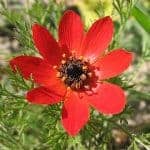


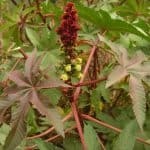
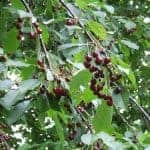

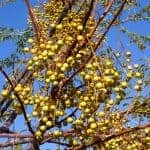
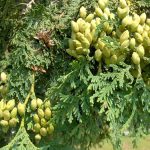
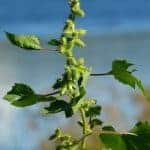
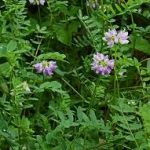
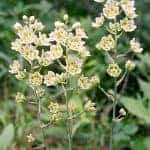
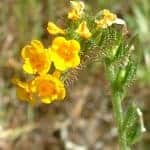 accumulation.
accumulation.